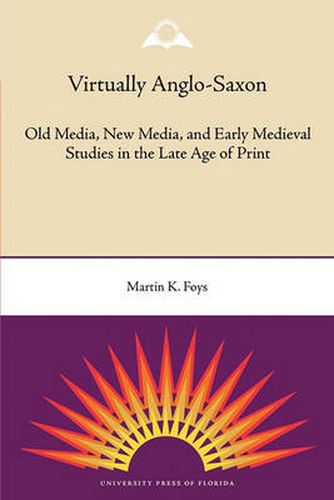Readings Newsletter
Become a Readings Member to make your shopping experience even easier.
Sign in or sign up for free!
You’re not far away from qualifying for FREE standard shipping within Australia
You’ve qualified for FREE standard shipping within Australia
The cart is loading…






This title is printed to order. This book may have been self-published. If so, we cannot guarantee the quality of the content. In the main most books will have gone through the editing process however some may not. We therefore suggest that you be aware of this before ordering this book. If in doubt check either the author or publisher’s details as we are unable to accept any returns unless they are faulty. Please contact us if you have any questions.
It’s not often that a scholar writes a book that puts her or his literary period on the map of literary studies … Particularly valuable because it tells us an immense amount about key texts and materials of Anglo-Saxon culture but because it also fills in a history entirely missing from recent work in New Media. –Richard Burt, University of Florida
Foys argues that early medieval culture did not favor the representational practices privileged by the modern age and that five hundred years of print culture have in effect shut off modern readers from interpretations of text and image that would have been transparent to a medieval audience. Examining print and post-print ways of reading medieval literature and art, he derives alternative models of understanding from the realm of digital media, considering pre-print expression through a range of post-print ideas and producing new and vital understandings of visionary Old English poetry, Anglo-Saxon maps of the world, 11th-century Benedictine devotional writings, medieval mathematical systems, stone sculpture of Viking settlers, and the famous Bayeux Tapestry.
Building chapter upon chapter into a sustained discussion of New Media theory and medieval interpretation, Foys provides a field-defining investigation of how digital technology and expression can refine and revitalize early medieval studies.
$9.00 standard shipping within Australia
FREE standard shipping within Australia for orders over $100.00
Express & International shipping calculated at checkout
This title is printed to order. This book may have been self-published. If so, we cannot guarantee the quality of the content. In the main most books will have gone through the editing process however some may not. We therefore suggest that you be aware of this before ordering this book. If in doubt check either the author or publisher’s details as we are unable to accept any returns unless they are faulty. Please contact us if you have any questions.
It’s not often that a scholar writes a book that puts her or his literary period on the map of literary studies … Particularly valuable because it tells us an immense amount about key texts and materials of Anglo-Saxon culture but because it also fills in a history entirely missing from recent work in New Media. –Richard Burt, University of Florida
Foys argues that early medieval culture did not favor the representational practices privileged by the modern age and that five hundred years of print culture have in effect shut off modern readers from interpretations of text and image that would have been transparent to a medieval audience. Examining print and post-print ways of reading medieval literature and art, he derives alternative models of understanding from the realm of digital media, considering pre-print expression through a range of post-print ideas and producing new and vital understandings of visionary Old English poetry, Anglo-Saxon maps of the world, 11th-century Benedictine devotional writings, medieval mathematical systems, stone sculpture of Viking settlers, and the famous Bayeux Tapestry.
Building chapter upon chapter into a sustained discussion of New Media theory and medieval interpretation, Foys provides a field-defining investigation of how digital technology and expression can refine and revitalize early medieval studies.